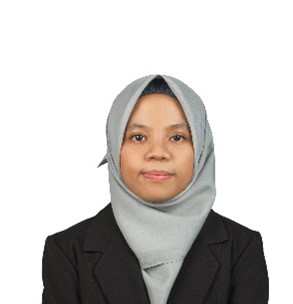
Introduction
As shown in a 2016 Al Jazeera documentary, seven primary school students of Orang Asli descent were reportedly missing while visiting the rainforests of Gua Musang, Kelantan.
After 50 days of searching, five of the children were found dead and the other two injured.
A subsequent interview with some Orang Asli students revealed a shocking fact. Based on one testimony, their teacher – identified as a Malay – frequently treated them in an abusive manner. The teacher had reportedly given them stale food and scolded them with racial pejoratives such as “Asli bodoh!”(dumb Aborigines!).
This revelation further influenced Orang Asli parents’ and students’ cynicism towards Orang Asli education, resulting in students’ reluctance to participate in formal schools.
The Orang Asli Education
Given the historical context, the term of Orang Asli is a continuation of British colonial policy that was first used as colonial labelling of particular indigenous groups inhabiting the Malay Peninsula.
As found in a note by British bureaucrat, H. D. Noones, the term Orang Asli was derived and translated from “aborigines” and was created to distinguish the non-Muslim natives from the Malay population. This label was not mutually exclusive—it comprises 19 ethnic groups with various cultures, social organisation, livelihood and physical features.
Educational access for Orang Asli was provided by the Malaysian government as part of the implementation of the Second Malaysia Plan (1961-1965) all the way to the Tenth Malaysia Plan (2011-2015), as Orang Asli were categorised as low-income class groups that require education to improve their quality of life.
Meanwhile, in a broader context, the provision of access to education for Orang Asli is already encapsulated in the United Nations Declaration Rights of Indigenous People. Among others, it calls for the state to provide education free from discrimination and with methods that befit Orang Asli’s cultural background.
Until recently, student attendance in Orang Asli schools was at 88.9%. However, in terms of student achievement in the Primary School Achievement Test, the figure only stood at 29.9%
Furthermore, a downward trend was recorded in the percentage of students who continued their education from the primary school to the secondary school levels. In 2019, 74.3% of students continued, a decrease of 2.4% from the previous year.
According to the report, among the reasons for this decline include the long distance of secondary schools from Orang Asli settlements and the challenge to integrate Orang Asli students with students of other ethnicities.
Furthermore, the provision of education for Orang Asli has also been subject of criticism. Despite having a distinct ethnic identity from the Malays, the Malay language is still the predominant medium of instruction in Orang Asli schools, as found in the case of Sekolah Kebangsaaan Sungai Berua, Terengganu.
Students’ abilities in writing, reading and arithmetic are often considered unaligned with their “age”, which is standardised in the national curriculum. For example, fifth graders Orang Asli students (between 10-11 years old) in Sekolah Kebangsaan Sungai Berua are still unable to read Malay texts and solve arithmetic questions. This is despite those standards being requirements that should have been accomplished by third graders (between 8-9 years old), according to the national curriculum.
This leads to a critical question: Should indigenous education be implemented?
Attending School: Learning to Become a Malay?
Due to the use of the Malay language as the medium of instruction in Orang Asli schools, a language barrier emerged between Malay teachers and Orang Asli students. This is a significant constraint in the everyday teaching and learning process.
In 2013, the Ministry of Education issued the Dignifying Malays and Strengthening English policy that obliged all national education institutions in Malaysia to use English and Malay as mediums of instruction. There is no exception to Orang Asli schools.
This policy aims to boost student confidence in using standardised Malay and English both in formal and informal settings.
Meanwhile, for most Orang Asli students, Malay is considered to be their second language, used only in a formal environment—at the school. During lessons, Orang Asli students are thus forced to carry out rapid code switching mentally in order to find appropriate terms in their own language for the concepts being taught to them in Malay.
In one particular case, students are oftentimes unable to fully comprehend the learning materials provided to them in maths class. It has been found that, in comparison to the standard tests in written Malay, Orang Asli students are able to perform better in tests of numeracy and computational skills when they are conducted orally or bilingually (in Malay and their mother tongue).
Teachers’ capacity to adjust their teaching style to the needs of Orang Asli students thus becomes a priority. Challenges faced by students to comprehend learning materials are also exacerbated by teachers’ non-fluency in the Orang Asli language. This is particularly an issue in teaching first grader students with limited Malay proficiency.
Another hindrance is, as indicated above, the geography of Orang Asli settlements. The remoteness of their areas decreases the frequency of contact with Malay-speaking society. This leads to lack of competency in the Malay language, contrary to government aspiration to create a society that is confident in speaking Malay.
Furthermore, religious education could also be a barrier. As denoted in the Aboriginal Peoples Act 1954, Orang Asli students have the right to absences religious classes unless a notice is given otherwise by their parents or guardian. As written in the Act:
No aboriginal child attending any school shall be obliged to attend any religious instruction unless the prior consent of his father or of his mother if his father is dead, or of his guardian should both parents be dead, is notified to the Director General, and is transmitted by the Director General in writing to the headmaster of the school concerned.
Despite this, Islamic religious preachers facilitated by Jabatan Kemajuan Islam Malaysia (JAKIM) and Jabatan Kemajuan Orang Asli (JAKOA) often conduct sermons and religious activities engaging Orang Asli students. They have also provided scholarships for Orang Asli Muslim students who have converted to Islam.
The obligation to use Malay and participate in Islamic activities thus underscores a lack of sensitivity to the distinct cultural identify of Orang Asli, thus impacting their educational system.
Theoretically speaking, integrating the Orang Asli community into the mainstream national curriculum and educational institution has become a form of hegemonic infrastructure since these two factors, language and religion, have played an important power in constructing the Malaysian national identity.
Seeking an Alternative
Taking a lesson from the case of Sokola Rimba—an indigenous school for the Orang Rimbacommunity in Jambi, Indonesia, there are several conditions that ought to be met in the implementation of education for indigenous communities.
Among others, these are: 1) a lesson plan that is tailored to their daily activities; 2) the facilitation of students’ critical thinking abilities to cope with the developmental challenges around them; 3) the assistance to achieve self-realisation and the community’s self-integrity; 4) the organisation of a localised educational system, and; 5) the ability to generate a beneficial impact to the community. Therefore, providing access to education for the indigenous community should be framed as an opportunity to teach diversity and equality instead of a hegemonic exertion of a dominant group over a subordinate one.
